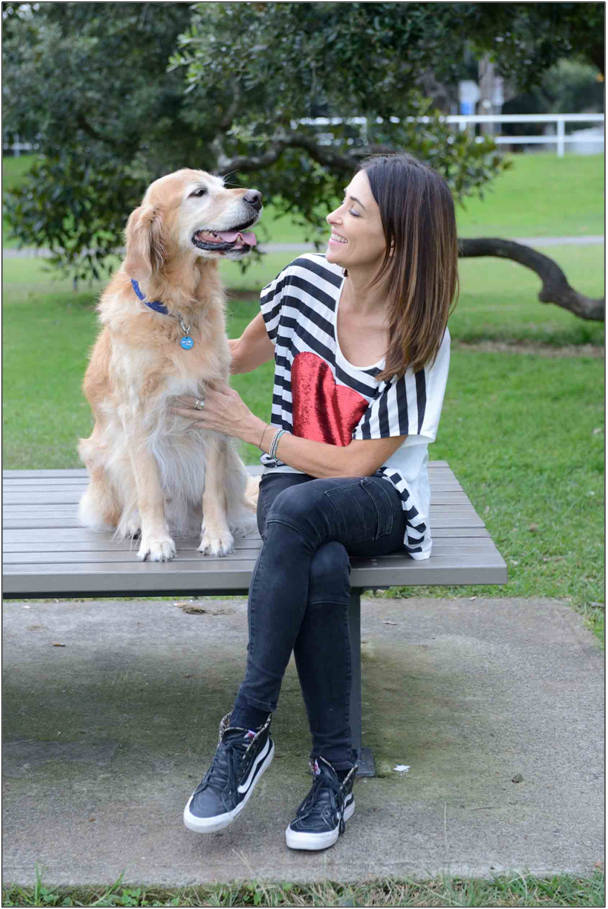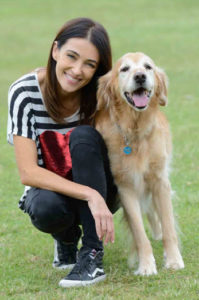 Training your dog to behave around your home and in situations with other people can take some time, but it is worth the effort to ensure you and your furry family member are able to enjoy spending quality time together.
Training your dog to behave around your home and in situations with other people can take some time, but it is worth the effort to ensure you and your furry family member are able to enjoy spending quality time together.
This post from Dr Katrina Warren outlines how you can help your dog understand boundaries and provides strategies to help you manage their behaviour.
Tips on how to teach your pet how to behave
It’s almost impossible to imagine your canine partner evoking any feeling other than joy. Alas – if not sufficiently trained, they can prove to be a difficult member of the family. Just like we teach our kids, we need to teach our pets to learn what behaviour is acceptable and what is not – remember they are not born understanding your house rules and despite common belief, with the right level of love and respect, dogs at any age can learn to behave.
Before you begin tearing your hair out about your misbehaved fur-ball, educate yourself on the most common problems when it comes to behaviour and how to solve them.
a. Chewing
Dogs are curious by nature and will chew almost anything they can get their mouths on, especially while they’re puppies and are teething. This is great if it’s a dog toy or a tasty bone, but not so great if it’s your new pair of expensive running shoes or the leg of a couch. Although chewing usually subsides within a year, it can become a bad habit if it’s not managed early on.
Tips: Try to provide specially designed chew toys and bones under supervision for your dog to keep them occupied and reduce the temptation to chew on things they shouldn’t. You can make chew toys especially appealing by finding one that can be filled with tasty treats such as chicken necks or wet food. Placing the toy in the freezer while filled with treats also creates more of a challenge for your puppy and will keep them busy (and out of trouble!).
If you have a young dog, puppy-proof your place by moving easily chewable items such as plants or electrical cables so they’re not easily accessible. Try not to leave your puppy unsupervised in areas like your garden or living room – there’s no point in getting angry at the puppy for an action that is natural for them, which happened because they weren’t being supervised.
b. Nipping & Biting
Dogs explore the world using their mouths. Biting is a habit that is inappropriate for us humans, which can sometimes make us feel that our dog biting is also inappropriate, when it may be totally normal, especially in puppies.
Tips: When dogs play together, especially puppies or adolescence, one will ‘yelp’ if the other has bitten too hard and stop playing. Puppies then learn to bite more softly to continue play. Let your dog know when it has gone too far, by saying “ouch,” followed by a minute or two time-out before returning to play. You can also encourage the dog to play-bite with a toy in exchange of your hand. These methods will be more effective than yelling at your dog, as they simply won’t understand what you are saying, and will be unlikely to change its behaviour.
Avoid over exciting or engaging in rough play with your dog as this often leads to nipping. Dogs will also often chase or bite your feet while you walk, as they get so excited by the movement. Have a plan for what you will do if your dog play bites, which may involve redirecting the bite to one of their favourite toys, or changing gears completely and asking your dog to do a command such as sit or lay down.
c. Housetraining
This is the most discussed dog problem, particularly in puppies, and can be the most frustrating of problems when things don’t go to plan. It’s important to keep this experience as positive as possible, as encouragement will get you much further than scalding. Keep in mind that dogs don’t speak the language as us! It may seem like an obvious statement, but many of us try to chastise our dog when they have an accident and they simply cannot understand the situation.
Tips: Any time your dog eliminates in an appropriate place, either at home, at the park or during a walk, praise them excessively and reward them with treats or play time. This way they will learn that it’s a positive action and that it pleases you. Puppies usually need to eliminate when they first wake up or after a meal. A signal they need to relieve themselves is if they start to sniff the ground and turn in circles. Be pro-active in these situations and quickly take them outside or to a training mat before accidents occur.
Try introducing a phrase such as ‘wee-wee,’ that you associate with elimination. This word association will be especially helpful later in the dog’s life if you are travelling or visiting someone, and you need your dog to relieve itself beforehand. If your dog has an accident, avoid punishing it or rubbing its nose in the mess. This will not be beneficial, and will only result in your dog becoming nervous or too scared to eliminate around you.
d. Being Non-Responsive
The big wide world is very exciting for young dogs – there is so much to smell and explore and it is understandable that having an adventure may be more exciting than coming to you when you call.
Tip: Change the way your dog thinks by teaching them that coming to you when you call is a pleasant experience. Of course he will want to come to you if he gets his favourite toy, a beneficial chew that is good for him, such as the PAW Wellness + Vitality Multivitamin & Wholefood Chews, or verbal praise. Work on this daily at home and in confined environments. When you first go to the park, use a long lead or rope to ensure your dog can’t run somewhere dangerous
Don’t punish your dog if he doesn’t come back or he may become scared of you. Make yourself fun and approachable for your dog and he will reciprocate.
*Always read the label. Follow dosage instructions exactly.
e. Barking
Dogs left outside are exposed to many more disturbances than indoor dogs and their barks are more easily heard by the neighbourhood.
Tip: Firstly, find out what your dog is barking at. As dogs usually bark the most right after their owners leave home for the day, give your dog something to do every time you leave the house, like a chew toy stuffed with food.
Ideally leave your dog inside preferably in a room away from the street with a radio or TV playing to mask the sound of outside noise. Reward your dog often for quiet behaviour – if he starts barking, use a word like ‘quiet’ and reward only once your dog stops barking.
f. Digging
Digging is natural for dogs so changing an instinctive behaviour takes a lot of patience. You may need to keep your dog inside when you go out to limit his opportunity to dig, to his despair!
Tip: Newly turned soil is irresistible to many dogs, and it is unlikely you could stop yours digging in it if they are left alone in the garden. Give your dog plenty of exercise and lots of toys, preferably with food hidden in them, to keep them amused. Digging can be a sign of boredom, so make sure he has lots to interest him when you are not home. Working breeds such as border collies and kelpies are more likely to get bored and find an outlet for their energy.
g. Jumping on People
When he was little, everyone was probably entranced by the cute little puppy who jumped up at them, laughing and wagging his teeny tail. Now he’s a bigger dog, no-one wants his dirty paw marks all over their clothes. But his behaviour is not his fault, because your loving attention has trained him to think that jumping up is a fun and rewarding thing to do.
Tip: Now you have to do the opposite from what you did when he was little. Instead of making eye contact and touching him when he jumps up, do the opposite. Turn around and stand still completely ignoring him. Wait until he has all four feet on the ground and then give him a little treat. Keep on doing this, and it will take many, many times, and he will eventually learn that he only gets a treat and your attention when he is sitting. As before, there is no point in shouting and pushing, because to a dog this is still attention and will only confuse him about what you want him to do.
Additional tips on how to raise a healthy dog can be downloaded from the PAW by Blackmores eBook “20 things no one tells you about raising a healthy dog”.
Dr Katrina Warren
 I’m a veterinarian and best known for my work in the media as a presenter and spokesperson. I’ve worked across all media platforms, including TV, radio, print and online. I’ve also authored four books, hosted many events and most recently created an online education program for dog owners. I genuinely love animals and my real passion is helping pet owners enhance the special bond that is shared with pets. I am a proud ambassador of Vet Products Direct, Bravecto and PAW by Blackmores. Read my full biography here.
I’m a veterinarian and best known for my work in the media as a presenter and spokesperson. I’ve worked across all media platforms, including TV, radio, print and online. I’ve also authored four books, hosted many events and most recently created an online education program for dog owners. I genuinely love animals and my real passion is helping pet owners enhance the special bond that is shared with pets. I am a proud ambassador of Vet Products Direct, Bravecto and PAW by Blackmores. Read my full biography here.